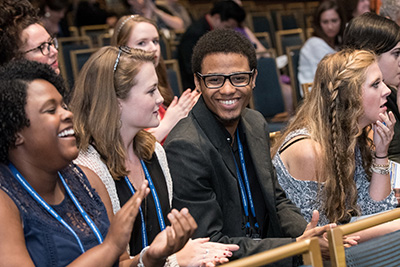What's New > Vocal Retraining of Problem Voices
 |
Back when I was trained, the standard method of voice training was empirical; it was expected that you taught what your teacher taught you. If a voice did not work, the would-be singer often fell by the wayside because there was not the information on the voice that is available today.
In the 1970s, that began to change with the development of fiber-optic technology. It was exciting to many voice teachers, and I spent many hours researching the subject at the University of British Columbia Medical Library. I also spent many summers away on courses in the US with leading researchers on vocal production. One course was particularly exciting at the Syracuse, New York Medical School. There, I was introduced to fiber-optic technology and to Jo Estill – an amazing pioneer.
Experience in the studio led me to understand that singers with vocal problems needed different rules with an emphasis on consistency in order to succeed. I discovered that I could, with a studio framework plan, help most of the singers in trouble. In the early stages, it was trial and error, but a pattern emerged that worked well, although there were changes tailored to each singer as training progressed.
From my perspective, the following rules are necessary for the singer to succeed. These rules ensure the singer has realistic expectations and understands that I am not a medical professional. I am not a doctor and I bow to the doctor’s direction as to the patient’s care. On the other hand, if I agree to work with a singer who has a vocal problem, I need to control the singing aspect of the process. Working with singers who have serious vocal problems is intense, time-consuming, fatiguing and a huge responsibility. This work is rewarding and the singers are grateful.
Guidelines
It has been my experience that most singers with serious vocal problems are only too willing to do whatever is required to regain their voice, especially those who are professional voice users. Without exception, they are fearful and vulnerable. It’s my responsibility to provide informed and clear directions to the singer. I consider it my job to allay those fears but without any promise as to the outcome of the lessons. With clear direction on my part and compliance on the student’s part, recovery is not only possible but likely. I make this clear at the outset.
1. If the symptoms are mild, I will work on basic technique for a maximum of two months (posture, breathing and phonation). If the symptoms are present in two months, the singer must consult a laryngologist. If symptoms are severe when I first audition the singer, I refuse to teach until the singer is seen by a laryngologist.
2. If a singer is referred to me by a laryngologist, I insist on knowing the exact nature of the vocal problem. If a diagnosis is nodes, polyps or post-vocal surgery, I impress on the singer that they must follow my directives or I will cease to teach them. This includes not singing anything other than what I assign until I feel they are technically sound -- which is usually around the three-month mark. I also insist they have at least one session with a speech pathologist and I do recommend that they have several sessions. A follow-up with the specialist is mandatory around the three-month period.
3. I try to have two to three half-hour lessons per week set aside for the first few lessons, teaching easy scales and humming. Consistency and monitoring are necessary. Subsequent lessons introduce vowels and breath-onsets. Easy and careful phonation without worrying the singer is the goal here. Also, I do not adjust the resonators at this point. I reduce the process down to the simplest form possible so that phonation can occur without extraneous muscle involvement. At this stage, most of the effort is directed toward relaxing the singer enough so that he/she is able to phonate and begin to enjoy singing again.
4. My experience has shown that the order of recovery cannot be proscribed after the initial lessons. I adjust my plan for the current day’s lesson depending on what I hear. I carefully choose repertoire and scales. If there is the slightest hint of inappropriate muscle use in a particular scale or song, I back off and choose something that I know is easier to sing. The singer’s confidence has been shaken by the loss of their voice and the goal is to restore their confidence. It is at this point when the singer and I really can begin the usual vocal training and enjoy singing again.
Arlene McIntyre has been a voice teacher in private studios and university music programs for many years. In her private studio in North Vancouver, British Columbia, Canada, she has worked successfully with singers who have problem voices. A member of NATS since 1976, she has held many executive positions at the local, district and regional level, serving two terms as Regional Governor in the Northwest.
This article first appeared in the "Independent Voices" section of the Spring 2016 edition of Inter Nos, the semiannual publication that provides important information about the work of NATS to its members. Each issue of Inter Nos includes the "Independent Voices" section, focused on the work of independent teachers. View the current issue of Inter Nos here.

